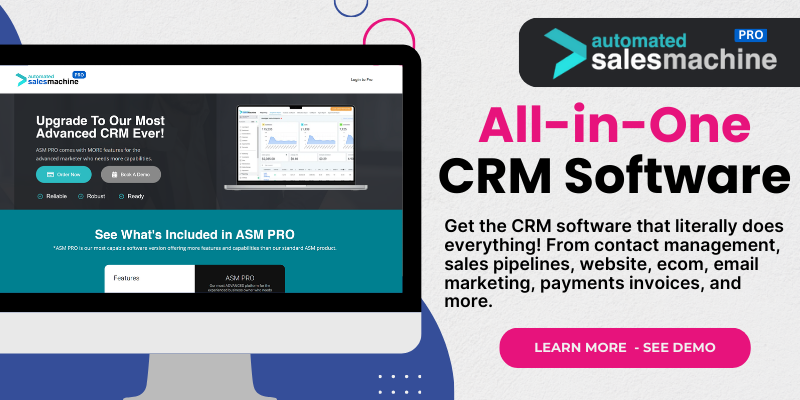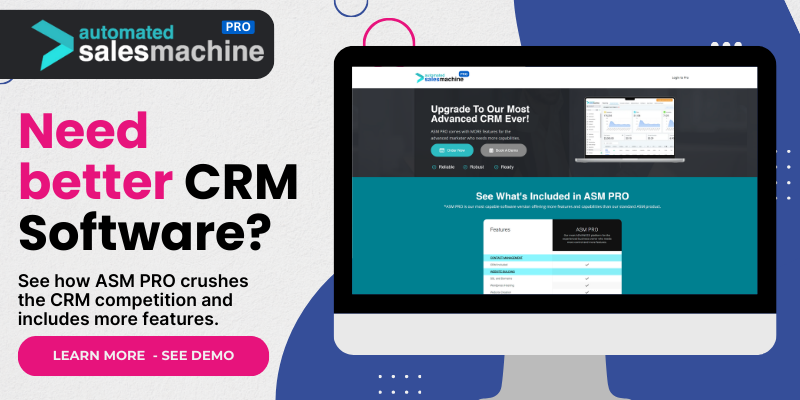Integrating Email Marketing Tools
The Importance of Email Automation
From my personal experience, one of the most effective ways to reach customers is still through email. Automation tools that integrate with CRM systems can send personalized messages based on user behavior. This means higher engagement rates and, ultimately, more conversions.
Using these tools allows you to schedule campaigns months in advance. So you can sit back and watch your marketing machine run smoothly without needing to manually send emails every day.
Plus, many email automation tools provide valuable analytics. You can see open rates, click-through rates, and who’s engaging with your content, helping you refine your strategies over time.
Choosing the Right Email Tool
Not every email marketing tool can seamlessly integrate with your CRM. I’ve had success with platforms like Mailchimp and HubSpot, which offer straightforward integration options. Before you commit, check for compatibility and ease of use to ensure it’s a good fit for your team.
Another essential factor is the type of data the email tool can pull from your CRM. The more specific the segmentation, the more personalized your campaigns can be. Look for tools that allow for dynamic content based on customer data.
Lastly, trial versions are your best friend. Testing tools for a few weeks will provide insights into how well they sync with your CRM and whether they enhance your marketing efficiency.
Using Automation to Personalize Campaigns
Automation takes personalization to a new level. When your email tool interacts with your CRM effectively, it allows you to tailor messages uniquely to each contact. Think about it: your subscribers receive content that relates directly to them based on their previous interactions.
For instance, if a user frequently clicks on articles about outdoor gear, they can receive tailored content—including exclusive discounts—aligned to their interests. This strategy not only increases the chance of engagement but also nurtures trust in your brand.
Additionally, you can set up automated follow-up sequences, which can keep your audience engaged over time. They might not convert on the first email, but with a series of targeted messages, you passively nurture leads until they’re ready.
CRM with Social Media Management
The Power of Social Connections
Social media remains a vital place for marketing. Integrating your CRM with social media management tools helps you track interactions and engage with your audience in real time. I’ve found that many CRM platforms offer some built-in social features; however, a dedicated tool like Hootsuite can elevate your strategy.
A solid social media tool will let you schedule posts, respond to comments, and monitor brand mentions all in one place. This way, you spend less time hopping between platforms and more time being strategic about your content.
Plus, you can get insights on customer sentiment across different social platforms, which informs future marketing efforts. Understanding how your audience feels about your brand is priceless for refining your messaging.
Engaging with Customers in Real-Time
One thing I love about integrating CRM with social media is the ability to engage instantly. Whether a customer tweets about a recent purchase or leaves a comment on your Facebook post, you can respond promptly, showcasing your brand’s stellar customer service.
Real-time engagement can convert casual interactions into loyal customers. I’ve had success turning comments into conversations that lead to sales. The immediacy of social media can give you a competitive edge if handled correctly.
Don’t underestimate the power of responding to customer inquiries and feedback. It shows you’re listening. You’re creating a community around your brand that others will want to be a part of.
Analytics and Data-Driven Decisions
Data is crucial in today’s marketing landscape. When your CRM integrates with social media management, you access analytics that reveal what’s working and what’s not. I’ve personally relied on these insights to shape my future campaigns.
Tracking engagement rates, clicks, and conversions across social channels helps refine strategies quickly. If something isn’t resonating, pivoting is much easier with real-time data at your fingers.
Moreover, you can use these insights to inform your broader marketing strategy. When you see what types of content are most engaging, you can focus more resources on those areas and climb ahead of your competitors.
Leveraging Analytics and Reporting Tools
Understanding Your Metrics
Analytics should be at the heart of every marketing campaign. Tools like Google Analytics, when integrated with your CRM, can provide comprehensive insights into customer behavior on your website and campaign performance.
I always encourage marketers to set clear metrics—like conversion rates or website traffic—to track effectiveness. You can pinpoint where visitors are dropping off in their journey and use that information to make necessary tweaks.
This level of insight enables a proactive approach. For instance, if you notice a spike in traffic but low conversion rates, it suggests that while people are interested, your landing page may need improvement.
Creating Regular Reports
Regular reporting is essential for ongoing success. I habitually create monthly reports that showcase analytics from CRM, email, and social media tools. This not only keeps my team aligned but also helps identify trends over time.
You can automate many reporting processes with the right analytic tools, saving time while ensuring you keep tabs on your progress. These reports should highlight key metrics and actionable insights to drive your marketing strategies forward.
Don’t overlook the importance of sharing these findings with your stakeholders or team members. Keeping everyone informed about performance creates a culture of transparency that fosters collaboration.
Using Data for Future Campaigns
Data isn’t just for reporting; it’s a goldmine for future campaign strategies. Once I collect insights, I love brainstorming how to integrate those learnings into future campaigns. What worked? What didn’t? Are there audience segments we’re neglecting?
This iterative process of using data to refine strategies is how successful campaigns are built. Over time, you’ll see improvements in engagement and conversion rates as you fine-tune your marketing efforts.
So don’t just gather data—use it! Each campaign gives you an opportunity to learn and grow, which keeps your marketing relevant and effective.
Implementing Chatbots and Customer Support Solutions
The Role of Chatbots in Marketing
Chatbots have become super helpful in automating customer interactions. When properly integrated with a CRM, I’ve found they can significantly enhance customer experience. They provide instant responses and can qualify leads before directing them to sales teams.
Using a chatbot means that you’re available around the clock, responding to customer inquiries even after hours. This can lead to a higher customer satisfaction rate and, ultimately, increased sales.
Additionally, the data collected from chatbot interactions can feed directly into your CRM, providing valuable insights into customer preferences and behaviors, which helps tailor future campaigns.
Choosing the Right Customer Support Tool
When selecting a customer support tool, consider how well it integrates with your CRM. Tools like Zendesk or Intercom can create a seamless experience for tracking customer issues.
One thing I look for is ease of use for both the team and customers. A complicated system can lead to frustration and slow response times, which we want to avoid at all costs.
Always check features that track support interactions to develop insights into customer pain points. The more we can solve these issues proactively, the more trust we build with our audience.
Enhancing Customer Relationships
Providing great customer support can turn a one-time buyer into a loyal customer. When customers know they can reach out for help and receive prompt responses, they are more likely to come back. I’ve seen businesses flourish because of their commitment to excellent customer service.
Also, implementing follow-up sequences after customer interactions from your CRM can keep the relationship going strong. A simple email thanking them for their inquiry or purchase can go a long way.
This shows that you value their business and are committed to their satisfaction, which further enhances the brand relationship.
FAQs
1. How can I integrate email marketing tools with my CRM?
Start by researching email marketing platforms that offer integration options with your CRM. Most popular tools like Mailchimp or HubSpot provide simple steps for integration. Follow their setup guides to link the two systems effectively.
2. What advantages do chatbots offer in marketing?
Chatbots help automate customer interactions, providing quick answers to inquiries and qualifying leads before passing them to a sales team. This can improve customer satisfaction and save time for your team, allowing them to focus on more complex issues.
3. How often should I review my marketing analytics?
I recommend reviewing your analytics at least monthly. Keeping a regular check allows for quick adjustments based on what’s working and what’s not. It’s all about being proactive rather than reactive.
4. Can CRM and social media tools work together?
Absolutely! Integrating a CRM with social media tools enables you to monitor customer interactions, track sentiment, and engage in real-time. This helps in building stronger customer relationships and providing timely support.
5. What kind of data should I focus on with my CRM?
Focus on data points that reflect customer engagement—like open rates, click-through rates, and conversion metrics. This data helps inform your strategy and guides you to optimize future campaigns based on past performance.

